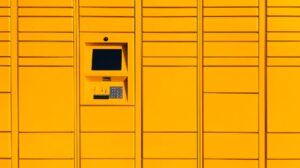It can be frightening to launch a blog for the first time. There’s a lot of excitement, but also fear about what could happen with it. If you want your blog to be successful, you want to do everything the best way.
Here are some valuable tips that you should consider if you want to start your blog on a positive note.
Choose the right hosting option
You need a top-notch web host if you want to manage a profitable blog or website. Hosting is usually not a top concern for people who are building their first website, but it should be.
Using the wrong web host can seriously harm your website. Unfortunately, the majority of people tend to ignore website security until there’s an issue with it. However, it’s essential to make an early investment in security solutions so you can safeguard your website before it’s too late.
Find a web host that places a high priority on security. A top-quality server should already have security precautions like firewalls and routine website backups in place.
Try to find a reliable provider who guarantees safety even if you choose their cheapest website hosting option. Don’t worry, because in this case, the price doesn’t have to affect the quality. An expensive option isn’t necessarily the best option, so choose wisely.
Invest in a good plagiarism checker tool
The last thing you want to do is get penalized by search engines for duplicate content. Your blog content has to be unique if you want to achieve great results.
That’s why investing in a quality plagiarism checker tool is a must. The fact that plagiarism checkers operate quickly is one of their main advantages as you can quickly search the entire internet with these software applications.
Consequently, you don’t have to worry about whether you plagiarized any content, even by accident.
All you have to do is upload your work to the software, and it will immediately run a complete plagiarism check. This way, instead of rereading your work and manually checking for plagiarism, you will save more time and effort.
Keep an eye on the website performance
If you don’t understand how people access and use your website, you won’t be able to figure out all the things you need to do and the elements you should add to it in the future.
Not too long ago, it was almost impossible for website owners to know these things. Before learning the value of website analytics, every single blogger used to be a beginner who depended on guesswork.
But times have changed and now millions of websites use Google Analytics, the greatest analytics tool available. You can use it to see your most popular content, where your visitors come from, and more.
Additionally, it enables you to monitor visitor activity across your website, which allows you to make business improvements based on data rather than guesswork. You can also use it to track clients and increase conversions if you manage an online store.
This tool will allow you to see what works well on your website and what needs to be fixed so you can improve the general performance and keep growing.
Canonical URLs
Try to learn as much as possible about various URL types and set them up from scratch. This will be very useful for your blog.
Unless you’ve specifically set your post’s URL to come after the section title, you’re likely to choose another category for your post. And at this point, you’re using the category in your URL structure.
If so, make sure to set the “canonical URL” (required category). Luckily, most SEO plugins (like Yoast and SEOPress) allow you to do this.
The canonical URL basically tells algorithms what the “official” post is and what content is most important. Also, if you’re writing another post that’s very comparable and aiming for the same tagline, it’s a good idea to have a canonical URL for that content piece as well.
Be careful with visuals
If you’re new to the world of blogging, you have to know that using visuals often comes at a high price. That is, unless you make sure that you’re using free visuals or that you pay the author.
Don’t use just any images you find online because they are probably copyrighted. Instead, try to find websites that offer free photos and visuals. For instance, Pixabay offers high-quality images that you can use for free.
Of course, you can also create your own images if you know how as there are quite a few free tools that can help. However, don’t think that these tools will get you far. Once your blog starts growing, it might be wise to hire a designer to help you out with your visuals.
Final words
This will be more than enough for your new blog. Carefully consider these tips and try to implement them as much as possible. It’s important to start things off positively and get an edge over your rivals right off the bat. This is especially true if your niche is a bit saturated.
Finally, remember that, once you go live, you have to publish consistently. It’s necessary to play the long game because success doesn’t come overnight and isn’t a definite guarantee.





